Today’s market offers many choices of valves and valve guides for similar applications. What makes AV&V™ stand out?
What about valves?
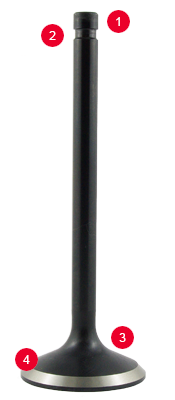
The two most popular valve coatings processes used in today’s valve manufacturing are chrome coating and nitride coating. When looking at valves that have run for a period of time you may have remarked that a ‘’black’’ valve will usually last longer. The reason is that on a chrome valve, it is not possible to apply more than few micron of chrome with a process known as flash chrome. This process entails the valve being quickly submerged in a chrome solution to let the chrome adhere to the stem. Some people call these valves ‘’ hard chrome valves’’, however it’s important not to confuse these two processes. With a hard chrome treatment – like on a hydraulic cylinder – a thick layer of chrome is applied and the surface becomes very hard. Try to pass a file on the surface of a hydraulic shaft and then do the same with a chrome stem valve and the difference is evident. The reason manufacturers can’t apply more chrome on the stem is that with the heat and expansion involved, it would cause a thick chrome layer to crack.
At AV&V™ all of our valves are one piece forged from 21-4N stainless steel alloy and we offer them mostly in the Black version. We have chosen a liquid nitriding process, followed by a precise heat threat process that will produce a very hard surface for optimal wear characteristics on the stem by keeping a soft grain structure in the center of the stem to prevent valve breakage in the case of a valve to valve or valve to piston contact. We take extra care to centerless grind the stems to a micro finish surface before the final nitriding process to give the valves that very slippery surface resulting in exceptional wear characteristics. For the valve tip we have chosen to go with a friction weld bearing alloy; this hard tip can be reground in the future and is more suitable with rocker arm application.
Another improvement in the design of our 5/16 valves is the 45° angle just below the lock groove. This groove was created to help valve seal installation without having to use a plastic sleeve protector.
On the stem diameters, our tolerances are the tightness in the industry and we have made the exhaust models slightly smaller than the intakes so an engine builder can use the same reamer on both intake & exhaust guides (with AV&V™ manganese bronze guides only; cast iron guides require slightly more clearance).
There are two series of valves available from AV&V™; the replacement series and the High Flow series. Both feature the same material and surface characteristic.
On the Extreme-duty replacement series, the valves respect the OEM dimensions (except for the shovel head intake which is 1.955’ instead of 1.940’ to achieve a better 3 angle seat job) The head shape has been optimized & swirl polished to improve flow characteristic. On the High Flow series, we have spent countless hours of flow testing to improve the shape of the valve for better airflow. The smooth dish face on the intake valve helps for good combustion in the chamber. The exhaust valve features a thick margin for better flow and all chamfer or radius have been optimized. For optimum airflow, in Evo or Twin Cam engine you can try our 1.585’’ exhaust valve (AV1585) and see that with the seat and bowl well prepared, this valve can flow the same or outflow 1.625’’ valves on the market. This valve gives you more intake & exhaust space so by not having to machine the intake seat as deep you also can gain on the intake flow. For bigger engines, you can use our 1.610D with a bigger seat opening for bigger flow numbers.
All our valves are one-piece forged from racing-grade stainless steel alloy. Each valve is nitride-processed and specially heat-treated for optimum performance.
1 – Bearing-quality hardened tip.
2 – Valve seal installation is a breeze with this 45° chamfer on the bottom edge of the locking groove.
3 – Following several years of flow-bench testing, the valve head is designed for greater airflow.
4 – A precision 45° face is ground after the nitriding process.

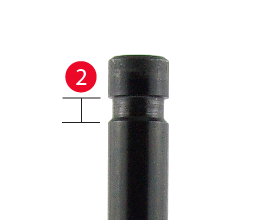
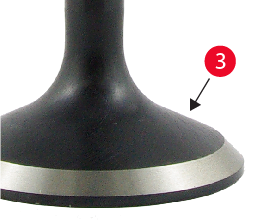
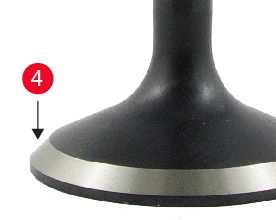
What about valve guides?

- Installation
- Valve guide materials - Myths and facts
- The advantages of manganese bronze guides
- Valve guide specifications
Typically, valve guides have been the neglected child in the valvetrain family, with no one stepping up to meet the needs of serious engine builders. To ensure a proper job, we were always required to “prepare” a valve guide to facilitate installation.
There are three ways of installing a guide in a head: with a driver and hammer; with a fixture and a press; or with a puller tool. With the first method, the guide must be polished to prevent aluminum scraping in the guide receiver hole. Then the driver is aligned as closely as possible with the centerline of the hole and hammered down until the guide is at its installed height. Sometimes you have to measure the protrusion and drive it in again to adjust it correctly.
With both puller and press methods, there was no point in freezing the guide to shrink it before installation because in the time required for installation, the hot head will have raised its temperature back up.
AV&V™ manufactures valve guides from two different materials: manganese bronze and micrograin cast iron (for Ironhead Sportsters®).
The manganese bronze alloy valve guide was developed some thirty years ago, with the introduction of high-performance aluminum heads for car racing. Manufacturers sought a material that would dissipate the heat from the valves better than cast iron, and would also increase lubrication between valve stems and guides.
They first introduced a silicon-based bronze alloy, an unsatisfactory choice due to high wear. Next, they began using high nickel-bronze alloy (AMPCO 45 or C630) which provided greater longevity but required more clearance to prevent valve sticking. This alloy is still in use today, particularly for exhaust valve guides in high heat applications (including nitro-methane) as its high nickel content is suited for these specific applications alone.
After much research and material evolution, the market has developed a new series of copper alloys. These include manganese, now used by manufacturers of High Performance cylinder head for their valve guides. This alloy offers engine builders superior heat transfer and the ability to fit the guides at a tighter clearance, providing better oil film control and longer life.
This alloy should properly be called zinc-bronze rather than manganese-bronze as it contains nearly 30% zinc (the bearing ingredient) and only 2-3% manganese (the hard component).
Some small-engine aluminum connecting rods run directly on the crank, without any bearings, and survive under hard abuse and occasionally no maintenance; they contain zinc, which is a self-lubricating bearing alloy.
• This self-lubricating material allows a tighter valve-to-guide clearance – .0008” for the intake and .001” for the exhaust (for EVO® and Twin Cam® using AV&V™ valves only). Other models may require more clearance on the exhaust.
• A tighter clearance results in the exhaust valve dissipating heat more rapidly and rocking less, which contributes to longer life.
• The valve stem will last longer, thanks to the slippery properties of manganese bronze.
• If a problem occurs and the valves bend, these guides will not crack and break apart like cast iron guides, which can destroy the engine.
• Customers report that engines with a tighter valve-to-guide clearance run more quietly.
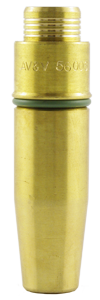
• A shorter valve seal area provides added room for high lift application, except for EVO® and Twin Cam® stock replacement models.
• Super-Grip finish provides a nonslip surface for all valves seal styles.
• A special high-temperature Viton o-ring prevents oil infiltration between the guide and the head.
• The self-centering area is tapered for easier installation.
• The tapered nose design is specifically designed to produce better airflow than conventional guides.
